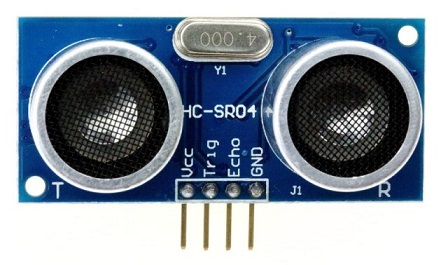Introduction
After building IoT embryos at IoT.Starter.Pi.Thing series, we are now ready to climb one more step towards IoT Home Intelligence. The development strategy and environment are based on the following:
- Raspberry Pi: Raspbian GNU/Linux 9.1 Stretch Lite is installed at Raspberry Pi (RPI) host and debian:stretch-slim equip docker images based on .NET Core 2.1 Preview 1. More details about RPI setup is available here and also at wiki.
- Swagger: The API First Design strategy is used to develop an ASP.NET Core Web Server automatically generated by SwaggerHub. The Thing specification exhibits the minimal requirements for
Thing embryos used at Home Intelligence applications. After each change on the API, SwaggerHub automatically generates updated code to build the home-srvdocker image that is finally pushed to DockerHub. - Docker: A multi-stage docker image build is accomplished at a speedy Windows x64 machine, generating code of linux-arm framework. The images are pushed to the cloud and then pulled back into the Raspberry Pi with Linux. Executed at both x64 and linux-arm sides, the docker-compose command helps to build, deploy and run containers properly.
- Lirc:
IoT.Home.Thing, powered by RemoteAPI, emulates legacy infrared remote controls. The Linux Infrared Remote Control for Raspberry Pi is installed at both RPI host and home-srv container, extending the Thing with IR remotes and their respective IR codes.
Please check IoT.Starter.Pi.Thing for more details about previous developments.
Creating a New Repository
This is an opportunity to use IoT.Starter.Pi.Thing as a starter for this new project. The first step is just copying the whole source code as a starter for IoT.Home.Thing. Then, home-compose.yml is created, based on previous files as follows:
version: "3"
services:
io.swagger:
container_name: home-srv
image: josemottalopes/home-srv
build:
context: .
dockerfile: Lirc/srv.Dockerfile
ports:
- "5000:5000"
network_mode: bridge
privileged: true
restart: always
devices:
- /dev/mem:/dev/mem
volumes:
- /var/run/lirc:/var/run/lirc
environment:
- ASPNETCORE_ENVIRONMENT=Release
home.ui:
container_name: home-cli
image: josemottalopes/home-cli
build:
context: .
dockerfile: src/Home.UI/cli.Dockerfile
ports:
- "80:80"
network_mode: bridge
restart: always
environment:
- ASPNETCORE_ENVIRONMENT=Release
ssl.proxy:
container_name: ssl-proxy
image: josemottalopes/home-ssl
build:
context: .
dockerfile: Proxy/proxy.Dockerfile
ports:
- "443:443"
network_mode: bridge
restart: always
Raspberry# IO
The current Raspberry# IO is a .NET/Mono IO Library for Raspberry Pi, an initiative of the Raspberry# Community. It was updated to .NET Standard 1.6 compatibility by Ramon Balaguer. In order to target RPI projects with .NET Core 2, the same library code was upgraded again, now to .NET Core 2.1 Preview 1.
Support for RPi3/BCM2835 was added, based on this post from Michaltalaga. The following modules are available, as you can check at home/src. The tests were not included.
Raspberry.System: include definitions for processor, board, models, etc.Raspberry.IO: includes basic I/O for input & output of digital & analog pinsRaspberry.IO.Interop: Linux I/O control device and memory managementRaspberry.IO.GeneralPurpose: access Raspberry Pi GPIO pins through memory with support for edge detection, allowing sub-millisecond polling of input pinsRaspberry.IO.SerialPeripheralInterface: provides preliminary support for SPI, using Linux's kernel SPI module driverRaspberry.IO.InterIntegratedCircuit: provides preliminary support for I2CRaspberry.IO.Components: provides preliminary support for various components, including HC-SR04 distance detector that will be used as an example
Distance Meter with HC-SR04
The HC-SR04 is an Ultrasonic module that provides non-contact measurement function ranging distances from 2 to 400 cm. As shown in the photo below, it has four pins:
- Vcc and Ground
- Trigger pulse input
- Echo pulse output

As shown at the timing diagram, the basic principle of work is:
- Issue at least 10 us (microseconds) high level pulse at trigger input
- The module automatically sends eight 40 kHz sound waves
- The module detects whether there is a signal back and raises the echo output pin for the time the sound takes to leave and return to sensor
- The distance from sensor to obstacle is then calculated knowing that velocity of sound is 340 m/s

Just for demo purposes, the HC-SR04 is connected to GPIO pins:
- Trigger pulse input is connected to GPIO20, connector pin 38
- Echo pulse output is connected to GPIO21, connector pin 40
Then, the GetHeaterState code is tweaked to use HC-SR04 distance detector from Raspberry#IO library.
[HttpGet]
[Route("/motta/home/1.0.1/temperature/{zoneId}/heater")]
[ValidateModelState]
[SwaggerOperation("GetHeaterState")]
[SwaggerResponse(200, typeof(HeaterState), "heater state")]
public virtual IActionResult GetHeaterState([FromRoute]string zoneId)
{
const ConnectorPin triggerPin = ConnectorPin.P1Pin38;
const ConnectorPin echoPin = ConnectorPin.P1Pin40;
double distance = 0;
string state = null;
Console.WriteLine("info: HC-SR04 distance measure");
Console.WriteLine(" Trigger: {0}", triggerPin);
Console.WriteLine(" Echo: {0}", echoPin);
var driver = GpioConnectionSettings.DefaultDriver;
using (var connection = new HcSr04Connection(
driver.Out(triggerPin.ToProcessor()),
driver.In(echoPin.ToProcessor())))
try
{
distance = connection.GetDistance().Centimeters;
Console.WriteLine(string.Format("{0:0.0}cm", distance).PadRight(16));
}
catch (TimeoutException e)
{
state = "Timeout: " + e.Message;
}
if (state == null) state = string.Format("{0:0.0} cm", distance);
HeaterState hs = new HeaterState
{
Id = zoneId,
State = state
};
var hs_state = hs ?? default(HeaterState);
return new ObjectResult(hs_state);
}
The results can be finally obtained using Swagger UI, as shown below:

The IoT.Home.Thing is now equipped with great software to improve Home Intelligence projects.
Have fun!
Did you like it? Please give me a ⭐️!
History
